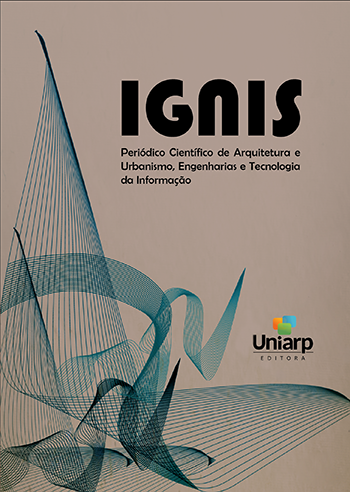DESFOLHA ANTECIPADA E SUA RELAÇÃO COM O TEOR DE CARBOIDRATOS EM RAMOS DE PESSEGUEIRO CV. CHIMARRITA
EARLY DEFOLIATION AND ITS RELATIONSHIP WITH THE CONTENT OF CARBOHYDRATES IN PEACH BRANCHES CV. CHIMARRITA
Abstract
A desfolha em frutíferas de clima temperado pode ser um processo induzido, mas naturalmente é um evento crucial para o desenvolvimento e sobrevivência deste grupo de plantas que apresentam hábito decíduo. Sua ocorrência é associada a importantes eventos, como a remobilização de nutrientes e formação de reservas. O objetivo deste trabalho consistiu em avaliar o efeito da antecipação da desfolha de pessegueiro cv. Chimarrita sobre o teor de carboidratos, carbono e nitrogênio em ramos bem como a frutificação efetiva. Para promover a desfolha foi empregado Ethefon (150ml 100 L-1 de água), Oxicloreto de cobre (150g 100 L-1 de água) e Ácido Fosfórico (1,5%), além do tratamento controle e da desfolha manual. Em relação a desfolha, Ethefon promoveu os maiores níveis aos 7, 14 e 28 dias após a aplicação, não diferindo do tratamento controle somente aos 7 dias. Já aos 34 dias, Ethefon e Ácido Fosfórico apresentaram 80,8% e 75,1% de desfolha, respectivamente. A frutificação efetiva, os teores de carboidratos, carbono, nitrogênio e a relação C/N não foram influenciados pela antecipação da desfolha. Os resultados obtidos demostraram que a desfolha de pessegueiro cv. Chimarrita após 22 de março não influenciou os atributos avaliados no ciclo seguinte. A desfolha induzida pode ser adotada em casos específicos, como no manejo de doenças foliares e em anos de ocorrência de geadas, objetivando acelerar e uniformizar a queda natural das folhas para reduzir custos. Neste caso, pode ser empregado Ethefon, por promover bons níveis de desfolha sem comprometer os atributos avaliados.
Palavras-Chave: Desfolhamento, Prunus persica; reservas.
ABSTRACTDefoliation in temperate fruit trees can be an induced process, but naturally it is a crucial event for the development and survival of this group of plants that have a deciduous habit. Its occurrence is associated with important events, such as the remobilization of nutrients and the formation of reserves. The objective of this work was to evaluate the effect of the anticipation of peach defoliation cv. Chimarrita on the content of carbohydrates, carbon and nitrogen in branches as well as the effective fruiting. Ethefon (150ml 100 L-1 of water), copper oxychloride (150g 100 L-1 of water) and phosphoric acid (1,5%) were used to promote chemical defoliation, in addition to the control treatment and manual defoliation. Regarding defoliation, Ethefon promoted the highest levels at 7, 14 and 28 days after application, not differing from the control treatment only at 7 days. At 34 days, Ethefon and Phosphoric Acid presented 80,8% and 75,1% of defoliation, respectively. Effective fruiting, carbohydrate, carbon, nitrogen and C/N ratios were not influenced by anticipation of defoliation. The results obtained showed that the defoliation of peach tree cv. Chimarrita after March 22 did not influence the attributes evaluated in the following cycle. The induced defoliation can be adopted in specific cases, such as in the management of leaf diseases and in years of occurrence of frosts, aiming to accelerate and standardize the natural fall of the leaves to reduce costs. In this case, Ethefon can be used, as it promotes good defoliation levels without compromising the evaluated attributes.
Keywords: Defoliation, Prunus persica, reserves.
Downloads
Published
Issue
Section
License
Copyright (c) 2021 Sabrina Baldissera, José Luiz Petri

This work is licensed under a Creative Commons Attribution-NonCommercial-NoDerivatives 4.0 International License.
Autores que publicam nesta revista concordam com os seguintes termos:- Autores mantém os direitos autorais e concedem à revista o direito de primeira publicação, com o trabalho simultaneamente licenciado sob a Licença Creative Commons Attribution que permite o compartilhamento do trabalho com reconhecimento da autoria e publicação inicial nesta revista.
- Autores têm autorização para assumir contratos adicionais separadamente, para distribuição não-exclusiva da versão do trabalho publicada nesta revista (ex.: publicar em repositório institucional ou como capítulo de livro), com reconhecimento de autoria e publicação inicial nesta revista.
- Autores têm permissão e são estimulados a publicar e distribuir seu trabalho online (ex.: em repositórios institucionais ou na sua página pessoal) a qualquer ponto antes ou durante o processo editorial, já que isso pode gerar alterações produtivas, bem como aumentar o impacto e a citação do trabalho publicado (Veja O Efeito do Acesso Livre).






